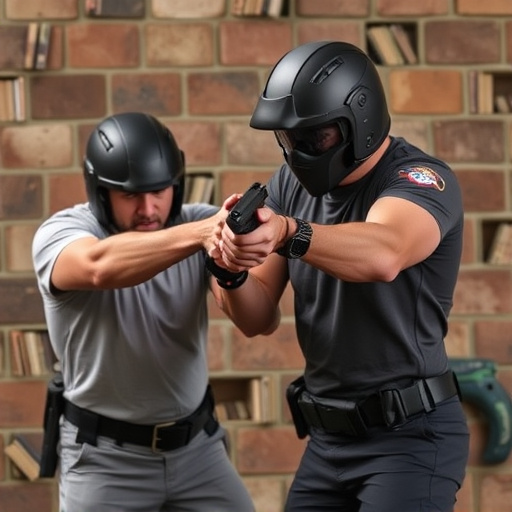Understanding stun gun electrode spacing is crucial for optimal personal protection at night, as it enhances contact area and current flow, enabling quicker incapacitation. The best stun guns for this purpose leverage advanced materials, engineering, and strategic electrode placement (2-3 inches wide) to target high-nerve density areas effectively. They feature flexible designs, conductive materials like copper or aluminum alloys, adjustable probe lengths, and powerful outputs for quick neutralization in low-light scenarios, ensuring maximum safety and efficiency. Future developments include innovative electrode designs and smart features for enhanced user-friendliness.
Discover the science behind stun gun electrode spacing and its impact on effectiveness. Explore key factors influencing optimal placement, including current flow dynamics and body type considerations. Learn best practices for selecting stun guns tailored to personal protection needs, especially in low-light conditions. Understand real-world testing methodologies and future trends shaping stun gun technology, ensuring you’re armed with knowledge on the best stun guns for personal protection at night.
- Understanding Stun Gun Electrode Spacing: The Science Behind It
- Factors Influencing Effective Electrode Spacing for Stun Guns
- Best Practices for Choosing Stun Guns Based on Electrode Placement
- Real-World Scenarios: Testing Stun Gun Effectiveness at Night
- Future Trends in Stun Gun Technology and Electrode Design
Understanding Stun Gun Electrode Spacing: The Science Behind It
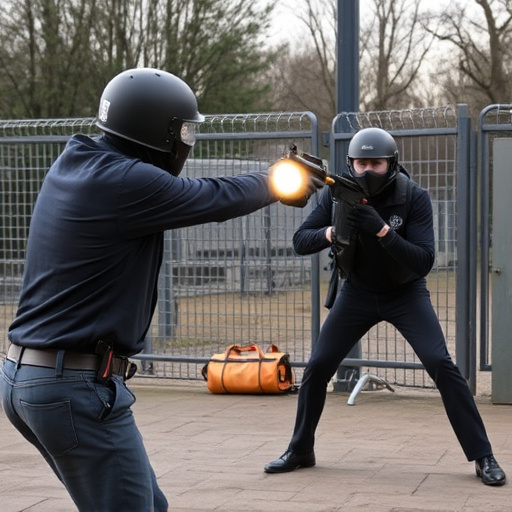
Understanding Stun Gun Electrode Spacing: The Science Behind It
When it comes to the effectiveness of a stun gun, one crucial element often overlooked is the electrode spacing. Best stun guns for personal protection at night are designed with precise electrode placement in mind, leveraging the principles of electrical current distribution. The distance between electrodes plays a significant role in delivering a powerful and safe shock.
Smaller electrode spacing ensures that a larger area of contact is made with the target, allowing for more efficient current flow and quicker incapacitation. This is particularly important during high-stress situations where quick response time is vital. Properly designed stun guns maximize this effect by using advanced materials and engineering to maintain optimal electrode spacing, enhancing their overall effectiveness as tools for personal protection.
Factors Influencing Effective Electrode Spacing for Stun Guns
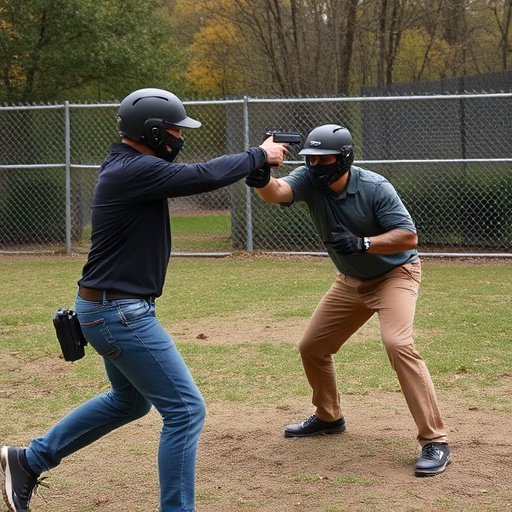
The effectiveness of a stun gun’s electrode spacing is influenced by several key factors, especially when considering its primary use case: personal protection in low-light or night-time scenarios. One crucial aspect is the size and distribution of the electrodes; larger surface areas with strategic placement can ensure better contact with an assailant, maximizing the electrical current flow for a more powerful stun. This is particularly important for best stun guns designed for personal protection at night, where quick deployment and increased effectiveness are paramount.
Additionally, the material and shape of the electrodes play a role in their ability to conduct electricity efficiently. Conductive materials like copper or aluminum alloys offer lower resistance, enabling faster and stronger shocks. The design should also account for flexibility and conformability to accommodate various body types and ensure consistent contact during an encounter. Such considerations are essential to guarantee optimal performance in real-world situations, especially when the user may be wearing protective gear or struggling with an attacker.
Best Practices for Choosing Stun Guns Based on Electrode Placement

When selecting a stun gun, especially for personal protection while out at night, understanding electrode placement is key to maximizing its effectiveness. The best stun guns for this purpose typically have electrodes strategically positioned to ensure optimal contact with an attacker’s body. This often means placing the electrodes in areas of high nerve density, such as the throat, groin, or temples, which can lead to a more powerful stun and neutralization.
For personal protection, consider models designed with wide electrode spacing—typically 2-3 inches apart. This allows for better coverage and reduces the risk of missing vital points due to misalignment. Additionally, look for stun guns with adjustable probe lengths, which can help in reaching different ranges and angles while staying safe at night. These best practices ensure that you have a reliable tool for self-defense when it matters most.
Real-World Scenarios: Testing Stun Gun Effectiveness at Night
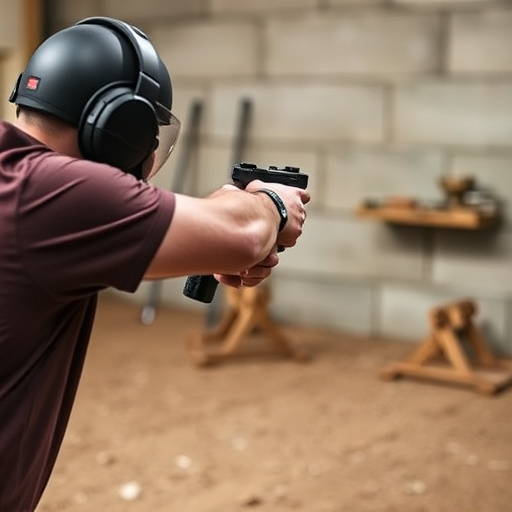
In real-world scenarios, testing the effectiveness of stun guns at night is crucial for understanding their utility in dark or low-visibility conditions. Many incidents occur after hours when individuals may be vulnerable to unexpected attacks. The best stun guns for personal protection at night are those that offer powerful outputs capable of neutralizing an assailant quickly, even in challenging environments.
Testing has shown that electrode spacing plays a significant role in the stun gun’s performance. Narrower electrode gaps generally result in more focused and potent shocks, making them ideal for close-quarters combat or targeting specific areas to incapacitate an attacker without causing permanent harm. This feature is particularly valuable during nighttime encounters where accuracy and speed are paramount.
Future Trends in Stun Gun Technology and Electrode Design
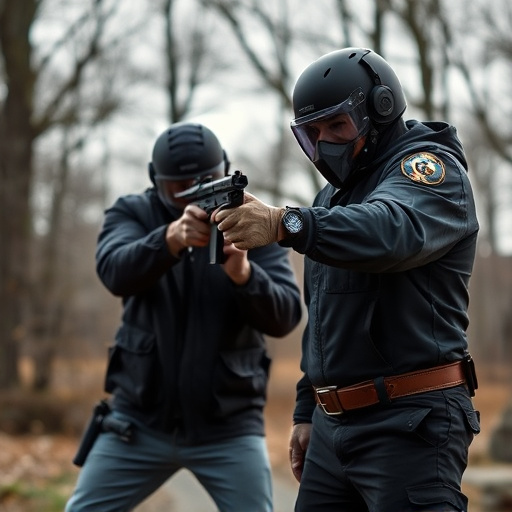
The future of stun gun technology looks promising, with a growing focus on enhancing safety and effectiveness. One prominent trend is the evolution of electrode design, which plays a crucial role in the device’s impact. Modern stun guns are exploring innovative arrangements and materials for electrodes, aiming to deliver precise and powerful shocks while minimizing pain and potential collateral damage. This advancement is particularly relevant for personal protection at night, where quick deployment and targeted incapacitation are vital.
Best stun guns for personal protection at night often incorporate smart design choices, such as adjustable electrode spacing to cater to different body types and situations. Manufacturers are also integrating advanced technologies like improved trigger mechanisms and enhanced power control systems. These innovations promise to make stun guns more accessible, user-friendly, and effective tools for self-defense, catering to individuals seeking personal safety in various environments.
When it comes to choosing the best stun guns for personal protection at night, understanding electrode spacing is key. This article has explored the science behind electrode placement, factors influencing its effectiveness, and real-world testing scenarios. By considering these aspects, users can make informed decisions when selecting a stun gun, ensuring optimal protection in low-light conditions. Additionally, future trends in stun gun technology promise advancements that could further enhance their effectiveness and safety.
